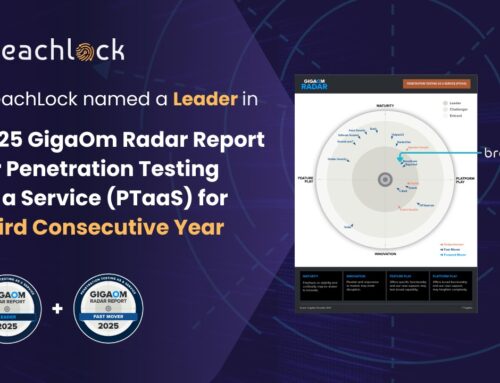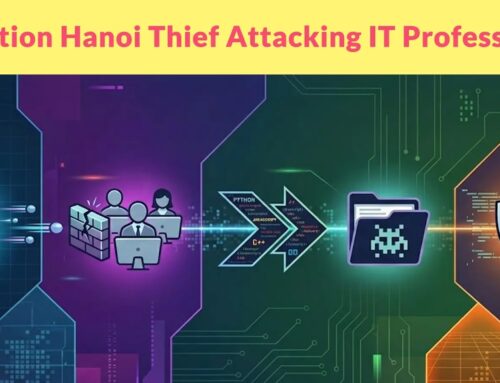
Chinese Hackers Weaponized Nezha Tool to Execute Commands on Web Server
A disturbing new trend in state-sponsored cyber warfare has emerged, as a sophisticated China-nexus threat actor has been observed weaponizing the legitimate server operations tool, Nezha. This strategic pivot, active since August 2023 and recently uncovered by security researchers at Huntress, marks the first public instance of Nezha being abused in this capacity. It highlights a critical tactical shift in how adversaries operate, utilizing seemingly benign tools for malicious ends to execute commands and deploy malware on compromised web servers.
The Weaponization of Nezha: A Tactical Shift
The campaign showcases a clear evolution in the threat landscape. Rather than developing custom exploits for every stage of an attack, adversaries are increasingly co-opting existing, well-known, and often legitimate tools. Nezha, intended for server management and operations, provides a familiar and versatile platform that can blend seamlessly into network traffic. Its weaponization by Chinese hackers allows for a stealthier approach to post-exploitation activities, making detection significantly more challenging for security teams.
This tactic bypasses many traditional security measures that are configured to flag unknown or suspicious executables. By using a recognized tool, the attackers can effectively “hide in plain sight,” performing command execution and malware deployment without raising immediate red flags. This amplifies the importance of behavioral analysis and advanced threat detection capabilities rather than relying solely on signature-based detection.
Impact on Compromised Web Servers
Once Nezha is weaponized and deployed on a compromised web server, the potential for damage is extensive. Threat actors gain a powerful foothold, enabling them to:
- Execute Arbitrary Commands: Run system commands with the privileges of the compromised server, facilitating further reconnaissance, data exfiltration, or system modification.
- Deploy Malware: Install a variety of malicious payloads, including backdoors, rootkits, or ransomware, ensuring persistent access and enabling additional malicious activities.
- Maintain Persistence: Leverage Nezha’s features to establish and maintain long-term access to the compromised environment, making remediation efforts more complex.
- Lateral Movement: Use the web server as a pivot point to move laterally within the network, targeting other critical systems and expanding the scope of the attack.
The implications for organizations whose web servers are compromised are severe, ranging from data breaches and service disruptions to significant financial and reputational damage.
Remediation Actions
Effective defense against such sophisticated attacks requires a multi-layered approach. Organizations must prioritize proactive security postures and rapid incident response capabilities:
- Implement Strong Access Controls: Enforce the principle of least privilege for all server accounts and services. Regularly review and revoke unnecessary access.
- Continuous Monitoring and Logging: Implement robust logging for web servers and critical network infrastructure. Monitor for unusual activity, particularly focusing on process execution and network connections originating from legitimate tools like Nezha. Look for deviations from baseline behavior.
- Endpoint Detection and Response (EDR)/Extended Detection and Response (XDR): Deploy advanced EDR/XDR solutions that can detect suspicious behaviors, such as a legitimate tool being used in an anomalous manner, rather than just known malicious binaries.
- Regular Patch Management: Ensure all web servers, operating systems, and applications are consistently updated with the latest security patches to mitigate known vulnerabilities. While this attack method isn’t a traditional vulnerability, patching underlying systems closes common entry points.
- Network Segmentation: Isolate web servers in dedicated network segments to limit the lateral movement potential of attackers even if a server is compromised.
- Threat Intelligence Integration: Stay informed about the latest threat intelligence, including details on tool weaponization tactics and indicators of compromise (IoCs) associated with specific threat actors.
- Security Awareness Training: Educate IT staff and developers about social engineering tactics and the importance of secure coding practices to reduce the initial attack surface.
Detection and Analysis Tools
Leveraging the right tools can significantly enhance an organization’s ability to detect and respond to the weaponization of tools like Nezha:
Tool NamePurposeLink
| Sysmon | Advanced activity monitoring and logging on Windows systems for process creation, network connections, and file modifications. | https://learn.microsoft.com/en-us/sysinternals/downloads/sysmon |
| Osquery | Operating system instrumentation framework for exposing an operating system as a high-performance relational database, enabling SQL queries for system data. | https://osquery.io/ |
| Security Information and Event Management (SIEM) | Centralized collection, storage, and analysis of security logs and events for anomaly detection and incident response. | (Varies by vendor – e.g., Splunk, Elastic SIEM, Microsoft Sentinel) |
| Threat Intelligence Platforms (TIPs) | Aggregates and contextualizes threat intelligence, including IoCs, TTPs, and actor information, to inform defense strategies. | (Varies by vendor – e.g., Anomali, Recorded Future) |
Key Takeaways for Cybersecurity Professionals
The weaponization of legitimate tools like Nezha by sophisticated China-nexus threat actors signals a critical evolution in cyberattack methodologies. For cybersecurity professionals, it’s no longer sufficient to focus solely on blocking known malware. The emphasis must shift towards comprehensive behavioral analysis, robust logging, intelligent threat hunting, and the implementation of strong, layered security controls. Understanding the adversary’s tactics, techniques, and procedures (TTPs) is paramount to building resilient defenses against these increasingly subtle and dangerous campaigns.





